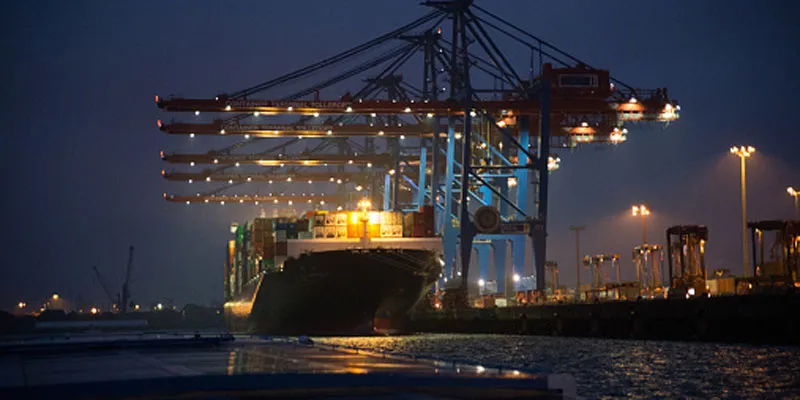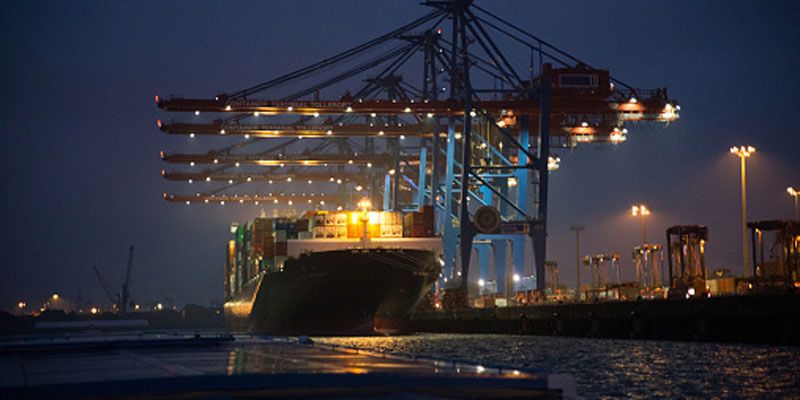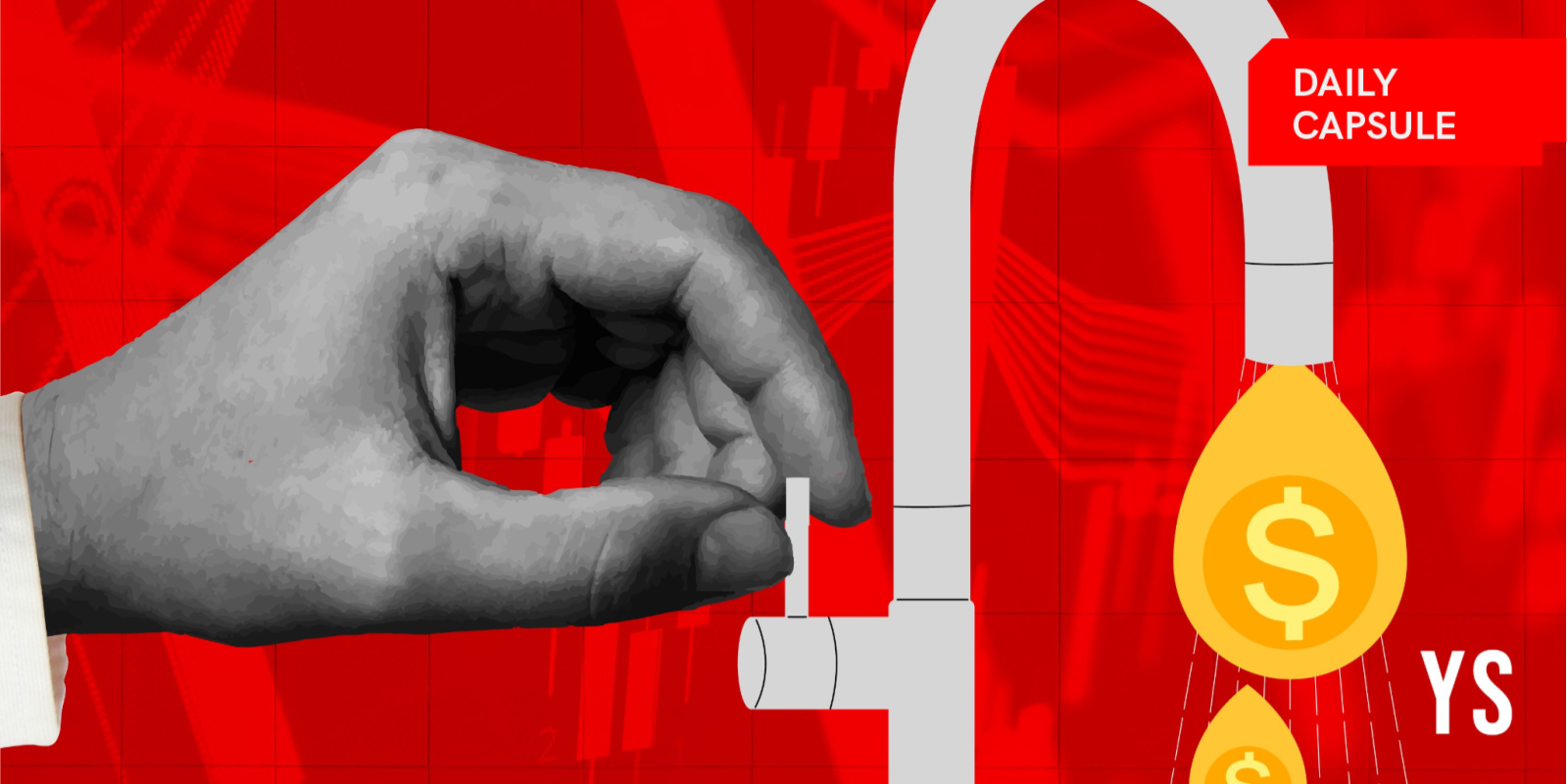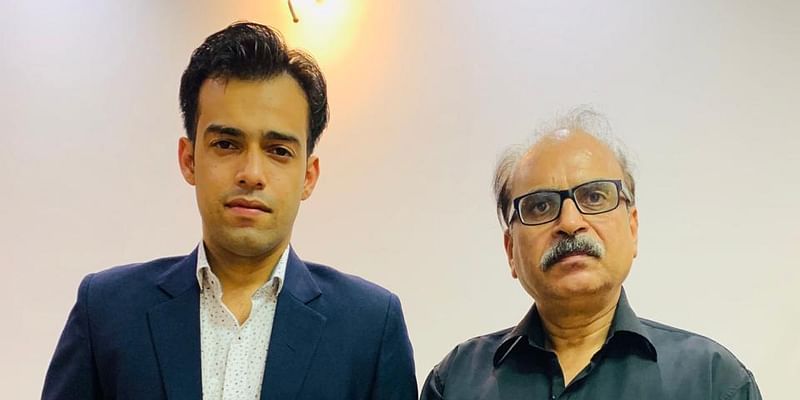Optimizing India's port systems
In this series, Sramana Mitra shares chapters from her book Vision India 2020, that outlines 45 interesting ideas for startup companies with the potential to become billion-dollar enterprises. These articles are written as business fiction, as if we’re in 2020, reflecting back on building these businesses over the previous decade. We hope to spark ideas for building successful startups of your own.

As the daughter of a shipping man, I grew up listening to my father’s ideas on Indian shipping: the vast opportunities for container, feeder, and barge services; the need for infrastructure development at sea and river port levels; dredging and revival of once active waterways. And as I grew into adulthood and India’s stature in the world economy grew – as its ships set sail for China carrying iron ore, and the US carrying clothes and textiles – so too grew the need for more robust port infrastructure to reach these ends. Gone was the manual era; today’s first-world countries moved at the speed of automation.
To make such an evolution possible, one thing was very clear to me: the major Indian ports needed to be privatized and run as professional corporations, not administered by IAS officers with limited business experience. Both the financial engineering and the operational experience necessary to run a several-hundred-million-dollar-a-year corporation is substantially different from the experience typically possessed by an IAS officer. Bureaucrats by background, most of them lacked the requisite knowledge of corporate finance, especially fund-raising, to scale the businesses, and they were not the leaders required to oust the unions and mafia that had infested the ports. As a result, as businesses these ports ran at sub-optimal levels, unable to attract top talent.
I looked at the P&L of the Kolkata-Haldia port, where my father had been a board member, and saw a company that generated $200 million in revenue in 2003, and $250 million in 2006. However, the growth potential was much higher given that the macro trends all pointed to a far larger opportunity for cargo flow. Eastern India, for example, was the primary mining zone. Tens of millions of tons of cargo could flow seamlessly to and from the coal, steel, and iron ore belts in Bengal, Bihar, and Orissa. Furthermore, the Kolkata-Haldia port system also served as gateway to the land-locked nations of Nepal and Bhutan, and it maintained substantial trade with Bangladesh. For all this potential, the numbers were, at best, unambitious.
In 2010, we raised initial funding from Texas Pacific Group, an American private equity firm with experience in infrastructure projects, and privatized the Kolkata-Haldia port, renaming it Eastgate.
We needed a top-down rebuild. So soon after the financial engineering was completed, a comprehensive management overhaul swept the port. We recruited an Indian CEO with deep domain experience in the upper ranks of the Singapore Port Authority. He had risen through the ranks there as that port was overhauled through the nineties, going from a sleepy outpost to become the busiest in the world, handling over a billion shipping tonnage.
Eastgate recruited him to Kolkata, and under his able stewardship, a leadership team of executives with international shipping and port management experience was assembled from as far away as Australia and as near as Mumbai. Decisions that once took five years to make were being made with once unheard of alacrity. Extremely competent, precise, and a natural leader, this no-nonsense man plowed through reforms like a bulldozer.
The restructuring also included a significant cost-cutting exercise that included large layoffs, erstwhile impossible under an intensely unionized government-owned regime. Lazy port officials accustomed to coming to work at eleven thirty in the morning, taking tea at noon, and lunch at one o’clock, only to return home at four o’clock were shown the door. Of course, as layoffs mounted, so too did the union dadas with their placards and strikes. But West Bengal had changed. Strikes were no longer welcomed in this region anxious for development, for industrialization, for progress. Supported by the local government, police intervened, and even the opposition parties failed to drum up controversy anymore. The wind of change had come with gusto.
Eastgate’s vision was to thoroughly dredge the eastern waterways – not just up to Kolkata, but all the way up National Waterway No-1 and National Waterway No-2. Eastgate brought under its management, through acquisitions, the fixed terminals at Haldia, Kolkata, Pakur, Farrakka, and Patna, as well as the floating terminals at Haldia, Kolkata, Diamond Harbour, Katwa, Tribeni, Baharampur, Jangipur, Bhagalpur, Semaria, Doriganj, Ballia, Ghazipur, Varanasi, Chunar, and Allahabad. A 1,620-kilometer stretch along NW-1 needed to be dredged, deepened, and rendered navigable by ships and barges. Similarly, a 891-kilometer stretch along NW-2 needed to be upgraded and maintained, along with its fixed terminal at Pandu, and floating terminals at Dhubri, Jogighopa, Tezpur, Silghat, Dibrugarh, Jamgurhi, Bogibil, Saikhowa, and Sadiya.
All this, of course, needed additional expertise and financing. Here, as technical partners, we brought in Royal Boskalis, a Dutch firm that specialized in dredging. My father had worked with them on numerous projects over the years and had maintained close contacts. For the financing, we built a coalition of Infrastructure Development Finance Company (IDFC), Citigroup, India Infrastructure Finance Company Ltd. (IIFCL), and Blackstone Group.
As our dredging team, under the guidance of Boskalis engineers, lifted hundreds of years of silt, the rivers gushed forth with renewed enthusiasm, a harbinger of what was to come.
Aside from dredging, in many cases, berths and jetties had to be constructed or reconstructed. For this, Eastgate acted as the landlord, giving out assets on a 30-year build-operate-transfer (BOT) mode to other private parties. In Haldia, for example, 15 berths inside the lockgates and five barge jetties outside the lockgates were assigned to BOT partners.
For seamless operation, Eastgate needed jetties for bigger barges, with 300-meter jetty length and adequate backyard space for large-volume bulk cargo handling, as well as smaller barge jetties of 130-150 meter length for transloading. Furthermore, we needed oil jetties for handling tankers. We needed container terminals in the Kolkata port with heavy lift cargo handling facilities on an industry-specific basis. The modernization needs, after years of neglect, were boundless.
The Khiddirpore dock system needed to be reoriented mainly for iron ore, coal, bulk steel products, cement, fertilizer, and general cargo handling by barges of different sizes. The entire Khiddirpore dock system was linked to Bangladesh, Nepal, Bhutan, and both north and northeastern Indian traffic through rail and primarily National Waterways No-1 and National Waterways No-2. But while rail links existed, the frequency had to be increased. And road transit, once discouraged because of a serious road connectivity handicap, only became a possibility once Magic Carpet Roads solved the issue.
There was, of course, a distinct shortage of the proper equipment and technology on all fronts. Cargo handling equipment, including ship-to-shore mobile harbor cranes, had to be procured from Liebherr, a German company specializing in port equipment. Quayside container handling cranes as well as container handling equipment like reach stackers and forklifts had to be upgraded. The jetty operators made these investments, while Eastgate focused on river maintenance, lockgate operations, and pilot navigation. The port system needed new pilotage facilities, lighthouses, and satellite navigational services for both sea and river pilots. This was within the direct jurisdiction of Eastgate.
Our primary need was dredging equipment – cutter section dredgers and shallow-drafted bottom-open hopper barges were essential for transferring silt lifted by the dredgers from the river up onto the interior land-reclamation projects. These land- reclamation projects served the dual purpose of township building and, at the same time, preventing silt from being dumped at the mouth of the river only to cause siltation and additional dredging expenses.
As you can imagine, this was a massive undertaking. For five years, relentless construction, dredging, silt movement, installation of cranes, and the humming of purposeful execution boiled forth. A team inspired by the vision of a modern port à la Singapore worked tirelessly to bring to fruition the piles of sketches, the tables of architectural models, and the computers of CAD files.
All of the above was completed in phases – five dredging zones were isolated, for example. Jetties were built in groups, and terminals adopted a progressive expansion plan. But by 2015, Eastgate had a fully functioning river and seaport system that seamlessly transmitted cargo throughout eastern India. The clamor of dredging cranes dropping silt into trucks, the sight of pillars sprouting from bulldozed ground, and the dust flying everywhere finally ended. Gleaming new terminals were inaugurated with fireworks and biryani.
Almost 100 private jetty operators worked in tandem with the Eastgate port system so that cargo transportation in eastern India, Nepal, Bhutan, and Bangladesh saw significant improvement. Voyages that once took three days were now completed in one and a half.
Our revenue model came in the form of vessel-related port charges, which included both smaller size shallow-drafted ships, particularly container ships, and flat-bottomed shallow-drafted barges ranging from 20/15,000 deadweight-tons down to 2,000/1,000/500 tons for shallow-drafted riverine operations. These vessel and barge- related port charges included port dues, pilotage, lighthouse dues, and cargo-related expenses like wharfage on all cargo handled (outside of BOT contractors), which covered 90% of the port traffic. Average royalty from BOT deals amounted to 30%-32% of the cargo-related revenue earned by the BOT contractors.
In addition, the Eastgate port system owned a substantial amount of real estate. We sealed numerous deals with private parties to locate water desalination plants, tea- processing zones, shipbuilding and breaking facilities, and a variety of other projects that effectively leveraged our assets. One of the first of these deals was with Gangotri in Haldia. Later, as Darjeeling became a major tea exporter, we leased them land for a dedicated processing zone.
Total revenues scaled explosively from $250 million in 2012, to $500 million by 2015, and $1 billion by 2020. The cargo volume reached 67 million metric tons in 2012, 80 million metric tons in 2015, and 110 million metric tons in 2020. It consisted of various types of coal for steel plants, power plants, cement plants, and aluminum plants; of iron ore; of oil products; of various steel products; and other break-bulk or liquid cargo. Furthermore, Eastgate improved the traffic volume of general containerized cargo, such as steel, tea, rice, cement, textiles, engineering goods, handicrafts, and leather.
An aerial view of the Kolkata or Haldia ports today offers the image of first-world infrastructure, with their blue, white, and orange containers neatly arranged below the cranes that stand along the river’s edge, their container loading and unloading zones in geometrical symmetry. That this was, a mere 10 years ago, a zone of chaotic incompetence is hard to believe.
But infrastructure and supply chain in India had been one of the most critical bottlenecks through the twentieth century and on into the twenty-first. And as with any project that hopes to rebuild a long-squared wheel, Eastgate has been a challenging effort, taking on the complexities of privatization, union breakups, bureaucratic dissolution, and the complete overhaul of technological and professional practices. But each day, as the lighthouse at Sagar Island ushers ships into the Eastgate system, it ushers in a new range of possibilities for Indian trade and commerce.
Image credit "GettyImages"











![[The Turning Point] Why pay brokerage? The idea that led to real estate startup NoBroker](https://images.yourstory.com/cs/2/730b50702d6c11e9aa979329348d4c3e/NoBroker-1587120686615.png)